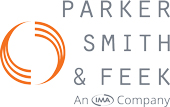Fire Sprinkler and Safety Technology for Commercial Real Estate: Revolutionizing Risk Management
September 21, 2023
In commercial real estate, insurance is a critical component of risk management, providing financial protection against unforeseen events that could otherwise lead to substantial losses. While advancements in fire sprinkler and safety technology offer revolutionary solutions to mitigate fire-related risks, they also significantly impact the insurance landscape for commercial properties.
The frequency and severity of fire incidents directly affect insurance premiums, making fire protection measures a central consideration for insurers. Properties equipped with outdated or inadequate fire safety systems may be viewed as higher risks, leading to increased premiums or even insurance coverage limitations. However, with the introduction of cutting-edge fire sprinkler and safety technologies, commercial properties can demonstrate a higher level of risk mitigation, potentially leading to more favorable insurance terms.
State-of-the-Art Sprinkler Systems
Water Mist Sprinkler Systems
Water mist technology has emerged as a game-changer in fire suppression. These sprinkler systems disperse ultra-fine water droplets, creating a mist that rapidly cools the fire and suppresses combustion. Water mist systems require significantly less water than traditional sprinkler systems, minimizing water damage to the property while maximizing fire suppression efficiency. Their versatility makes them suitable for various commercial settings, including high-rise buildings, data centers, and heritage structures.
Hybrid Sprinkler Systems
Hybrid systems combine the benefits of both wet and dry sprinkler systems. They use pressurized air in the pipes to prevent water leakage, ensuring dry pipes while still providing an immediate water response to a fire event. This innovation is particularly advantageous in regions with freezing temperatures, as it eliminates the risk of burst pipes and enhances system reliability.
Innovative Fire Detection Technologies
Aspirating Smoke Detection (ASD) Systems
ASD systems utilize advanced air sampling technology to detect smoke particles at their earliest stages. These systems continuously draw air samples into a network of pipes, enabling early identification of potential fire hazards. By providing an early warning, ASD systems offer more time for occupants to evacuate and emergency responders to address the situation, thereby minimizing property damage and potential injuries.
Video-Based Fire Detection Systems
Video-based fire detection technology utilizes intelligent algorithms to analyze surveillance camera footage for signs of smoke or flames. The system can swiftly identify potential fire incidents and activate the sprinkler system or trigger alarms. This technology is particularly beneficial in large commercial spaces, providing comprehensive coverage and real-time fire detection capabilities.
Integration of Artificial Intelligence (AI) and Internet of Things (IoT)
The integration of AI and IoThas brought transformative capabilities to fire safety and risk management in commercial real estate, including:
Predictive Analytics
To forecast potential fire risks, AI-powered predictive analytics can assess historical data, environmental conditions, and occupancy patterns. This empowers property managers to take proactive measures, such as enhanced maintenance or modifying safety protocols, to reduce the likelihood of fire incidents.
Smart Monitoring Systems
IoT-enabled devices and sensors can continuously monitor various factors, including temperature, humidity, and air quality. This real-time data helps detect early signs of fire or equipment malfunctions, allowing for swift corrective actions and preventing potential fire outbreaks.
Advantages for Risk Management
Implementing these cutting-edge fire sprinkler and safety technologies offers several advantages for risk management in commercial real estate, including:
Early Detection and Rapid Response
Advanced fire detection technologies enable early identification of fire hazards, leading to faster response times. Quick activation of sprinkler systems allows for swift fire suppression, minimizes property damage, and reduces the risk of business interruption.
Minimized Water Damage
Innovations like water mist and hybrid sprinkler systems optimize water usage, limiting water-related property damage while still providing effective fire control.
Enhanced Reliability and Versatility
The integration of AI and IoT into fire sprinkler and safety technologies ensures smart monitoring and predictive capabilities, making fire protection systems more reliable and adaptable to changing environmental conditions and occupancy patterns.
Improved Insurability and Premium Savings
Forward-thinking property owners who invest in these innovative fire protection methods demonstrate a proactive approach to risk management, reducing the likelihood of substantial claims and liability issues. Insurance companies are likely to reward such risk-conscious behavior with competitive insurance rates and more flexible coverage options.
As commercial property insurance becomes increasingly complex due to evolving risks and natural disasters, insurers are looking to partner with property owners who prioritize safety and disaster resilience. Emphasizing the benefits of new advancements in fire sprinkler and safety technology in insurance negotiations can be instrumental in securing comprehensive coverage at affordable rates.
Conclusion
Integrating new and emerging fire protection methods into commercial real estate is closely linked to insurance considerations. By investing in advanced fire safety technologies, property owners can not only bolster their risk management strategies but also position themselves favorably in the insurance market. Insurers recognize the value of these innovations in preventing fire incidents and limiting property damage, leading to potential cost savings through premium discounts and improved coverage terms. Embracing cutting-edge fire safety solutions demonstrates a commitment to safeguarding property and occupants, making it a win-win situation for both property owners and insurance providers in the ever-evolving landscape of commercial real estate risk management.
Resources and References
- City Fire Protection. (2021, September 17). How Does an Aspirating Fire & Smoke Detection System Work?. City Fire Protection. www.cityfire.co.uk/news/how-does-an-aspirating-fire-smoke-detection-system-work/
- Frackiewicz, M. (2023, June 16). The Use of Artificial Intelligence in Predicting and Preventing Forest Fires. TS2 Space. September 19, 2023, ts2.space/en/the-use-of-artificial-intelligence-in-predicting-and-preventing-forest-fires-3
- Goldstein, P. (2020, August 31). Fire technology in smart cities and beyond: how iot helps fight fires. StateTech Magazine. Retrieved September 19, 2023, from statetechmagazine.com/article/2020/08/fire-technology-smart-cities-and-beyond-how-iot-helps-fight-fires-perfcon
- Gottuk, D. T. (n.d.). Flame and Smoke Video Image Detection (VID). Fire Protection Engineering Emerging Trends enewsletter. www.sfpe.org/publications/fpemagazine/fpeextra/etarchives/fpeetissue21
- Lee, Y. M., Thien Khieu, H., Kim, D. W., Kim, J. T., & Ryou, H. S. (2022). Predicting the Fire Source Location by Using the Pipe Hole Network in Aspirating Smoke Detection System. Applied Sciences, 12(6). doi.org/10.3390/app12062801
- Maraveas, C., Loukatos, D., Bartzanas, T., & Arvanitis, K. G. (2021). Applications of Artificial Intelligence in Fire Safety of Agricultural Structures. Applied Sciences, 11(16). doi.org/10.3390
- O’Connor, B. (2022, June 24). Water Mist Systems Overview. National Fire Protection Association (NFPA). September 19, 2023, www.nfpa.org/News-and-Research/Publications-and-media/Blogs-Landing-Page/NFPA-Today/Blog-Posts/2022/06/24/Water-Mist-Systems-Overview
- Parent, D. (n.d.). How To Predict Events With Intelligent Fire And Security Systems. SecurityInformed.com. September 19, 2023, www.securityinformed.com/insights/security-fire-detection-reactive-preventative-security-co-14821-ga.23489.html?utm_source=SSc%20International%20Edition&utm_medium=Redirect&utm_campaign=International%20Redirect%20Popup
- Raia, P., & Gollner, M. J. (2014). (rep.). Literature Review on Hybrid Fire Suppression Systems. National Fire Protection Association (NFPA). Retrieved September 19, 2023, from www.nfpa.org/News-and-Research/Data-research-and-tools/Suppression/Literature-Review-on-Hybrid-Fire-Suppression-Systems#.
- Robbins, A. (2023, March 21). AI-Driven Predictions Key to Combatting Rise in Wildfires. State Tech Magazine. September 19, 2023, statetechmagazine.com/article/2023/03/ai-driven-predictions-key-combatting-rise-wildfires
- Verzoni, A. (2019). Smart Revolution. NFPA Journal. www.nfpa.org/News-and-Research/Publications-and-media/NFPA-Journal/2019/May-June-2019/Features/Smart-Building-Systems
The views and opinions expressed within are those of the author(s) and do not necessarily reflect the official policy or position of Parker, Smith & Feek. While every effort has been taken in compiling this information to ensure that its contents are totally accurate, neither the publisher nor the author can accept liability for any inaccuracies or changed circumstances of any information herein or for the consequences of any reliance placed upon it.





